| Roden 1/32 Sopwith Triplane |
| |
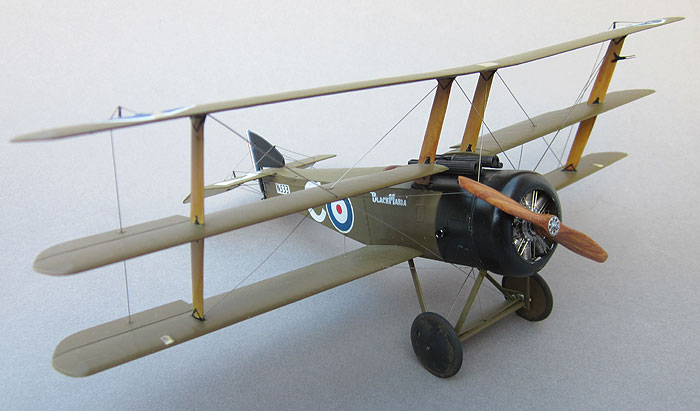 |
|
| I feel a sense of loyalty to Roden. Long before that New Zealand
upstart was a glint in a certain film producer's eye, Roden was quietly
amassing an extensive catalogue of WWI aircraft kits in all the popular
scales. Sure, some of their efforts aren't quite as nice as Wingnut's are
and they may not fall together as easily, but Roden held fast to an era
that most manufacturers wouldn't touch with a barge pole at the time and
for that they deserve our thanks and our patronage. The last time I built
a 1/32 scale kit I was about 15 so I'm pleased that it was a Roden kit that
got me back into large scale after all these years. Of course I'm still
mainly a 1/72 fan, but I'm sure an occasional foray into other "lesser"
scales won't kill me. |
| |
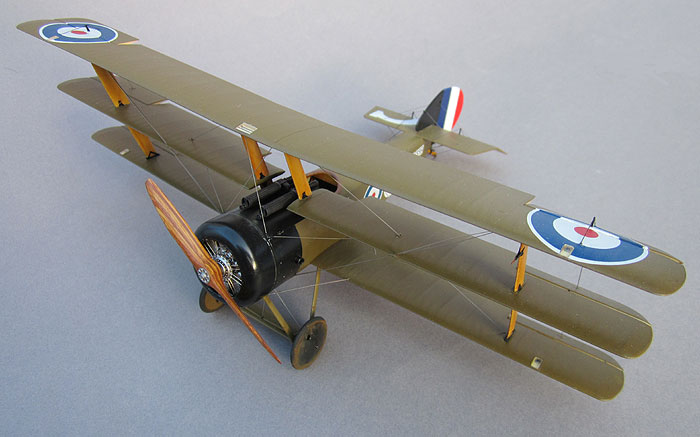 |
|
| While I have no doubt that the WNW Tripe is far superior,
Roden's kit still has a lot going for it. It's well engineered and fits
together as it should. It gives you the option of a single or twin gun aircraft
and there are some interesting decal choices as well, though it's perhaps
no surprise that I went with the fairly banal choice of Collishaw's machine.
Yes, it's become almost as much a cliché as that pesky red triplane
on the antagonist side has, but you can't argue with the success of the
Black Flight and its leader. And hey, they were there well before that Red
Baron guy flew anything in combat that had more than two wings! |
| |
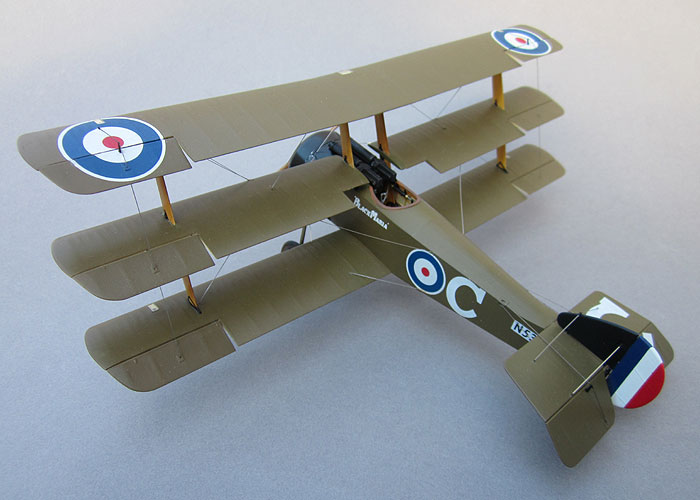 |
|
| It is an accurate kit with one exception, and to be honest
I would never have noticed it if Mr. Rimell hadn't pointed it out in his
review in Windsock Magazine. The fuselage is, apparently, 5mm too short.
Now that sounds like a lot, and I suppose it is, but honestly it really
isn't noticeable. Even when I sat it next to my WNW Sopwith Pup the error
isn't obvious (the Triplane is essentially a Sopwith Pup with three wings,
the fuselages are pretty much identical other than the wing mountings).
Even if I hadn't been well into the build when I read the review, I probably
wouldn't have done anything about it. Seriously, can you tell it's
5mm short...?! |
| |
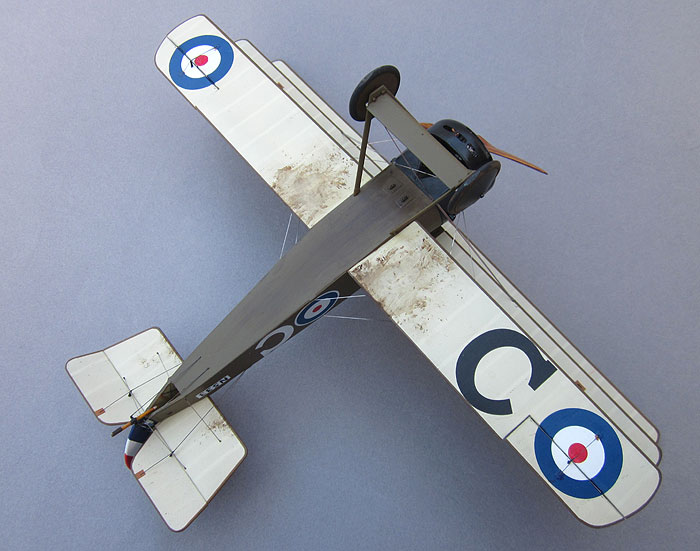 |
|
| I didn't go overboard on the weathering since this wasn't
a well used aircraft, at least not by Collishaw; he was only known to have
flown it on seven patrols, shooting down one Albatros and sending another
out of control on his last flight in this plane. Other than the usual oil
stains and mud the only weathering was a bit of chipping around the metal
panels and some blast marks under the muzzles of the Vickers guns. |
| |
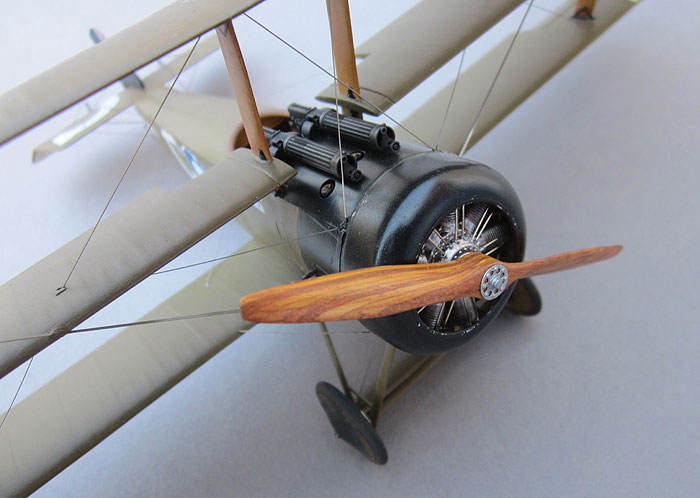 |
|
| The prop was carved from wood as is my standard practice for
WWI aircraft, though in this case I laminated alternating layers of thin
oak and mahogany veneers together instead of carving it from plywood as
I do in smaller scales. The prop boss was carefully sliced off the kit prop
and then sanded down paper thin before painting with Metalizer steel and
gluing on. This worked a treat and solved the dilemma I had about how to
tackle the prop boss. |
| |
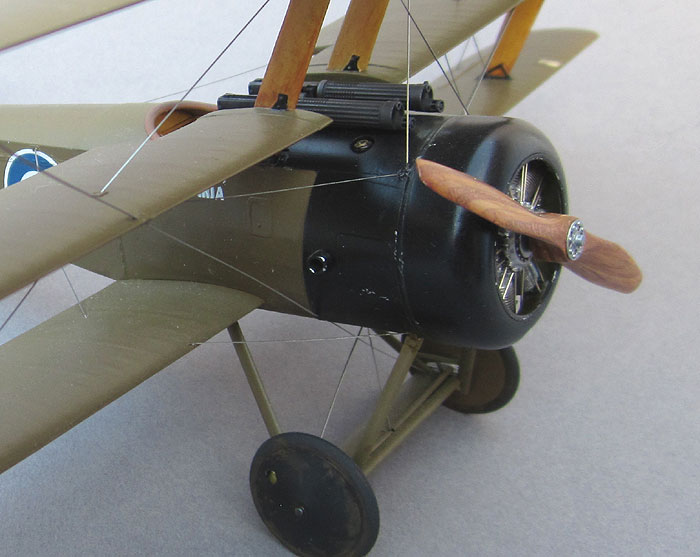 |
|
Vickers guns are 3D printed jobbies from Gaspatch Models.
They are expensive, but well worth it. The kit guns aren't bad, but it would
have taken a considerable amount of effort to get them looking anywhere
near decent and even then they wouldn't have been a patch on Gaspatch, so
to speak.
The etched rigging is from RB Productions. This worked very well and was
actually quite easy to install, however my choice of adhesive wasn't really
up to the task. I went with epoxy, thinking that as it was slightly more
flexible than superglue it might allow some give and therefore not break
as easily. That turned out to not be the case and I had quite a bit of slack
rigging to fix, caused by handling the model during final assembly. It's
worth noting that the Tripe has very few external turnbuckles, they are
present only on the flying wires. These I represented with blobs of black
paint. |
| |
|
| |





